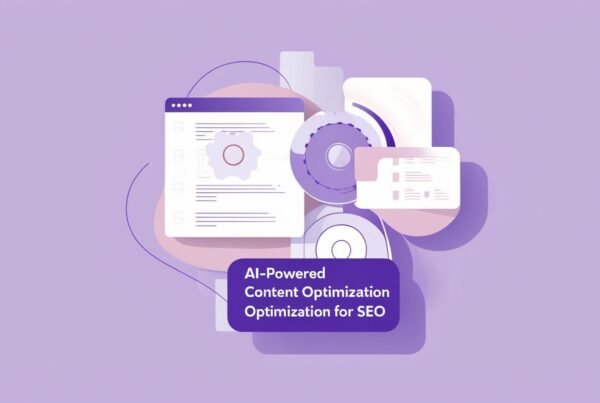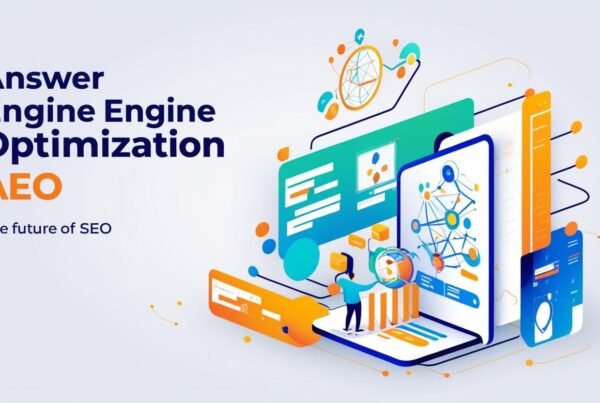Every time Google updates its search experience, my inbox lights up.
Clients, colleagues, and curious marketers all ask me the same thing: “Is this the beginning of the end for SEO?”
🚨 Spoiler alert: No. But it is a big shift.
Let me walk you through what Google AI Overviews are, how they work, and what this means for content creators, SEO pros and anyone who relies on organic traffic.
Table of Contents
What Are Google AI Overviews?
Google AI Overviews (formerly known as Search Generative Experience or SGE) is Google’s latest step in integrating generative AI directly into its core search engine. Think of it as an AI-powered summary box that appears at the top of the search results for certain queries pulling insights, context, and links from various sources to provide users with a synthesized answer.
If you’ve used ChatGPT or Bing AI, you’ll recognize the concept. But this is different because it’s happening inside Google Search.
The goal? To help users get a quick, useful overview without needing to click into multiple pages.
These summaries are generated using Google’s Gemini model, part of their search artificial intelligence efforts, and rely heavily on a mix of factual grounding, E-E-A-T (Experience, Expertise, Authority, Trustworthiness), and web signals.
Why This Matters (A Lot)
If your business or content strategy depends on Google traffic whether it is through blog posts, product pages, or lead gen — this is not something to ignore.
Here’s what’s changing:
- Users might get answers directly from the AI Overview instead of clicking through to websites.
- Organic listings get pushed further down the page.
- Featured snippets are evolving — or, in some cases, being replaced.
- New opportunities for visibility are opening up — especially for authoritative, well-structured content.
In other words, this update could reshape how people interact with your content. But it also opens up new ways to get discovered.
🔍 How Google AI Overviews Work
Let me break it down as I would to a client:
When you search something like “how to train for a half marathon” or “best sunscreen for sensitive skin,” Google may display an AI Overview at the top of the page.
This box includes:
- A short summary written by Google’s AI
- Citations (usually links) to 2–3 websites
- Additional suggestions or follow-up questions
- Carousel cards that often accompany the answer (especially in eCommerce or product categories)
It’s designed to give users a high-level response while still nudging them to click deeper — ideally to one of the cited sources.
When Do AI Overviews Appear?
Google hasn’t released a definitive list of trigger queries, but from what I’ve seen (and tested):
- Informational queries show them more often than transactional ones
- Complex or multi-step queries tend to activate them
- They’re more common on mobile than desktop (for now)
- YMYL (Your Money or Your Life) topics are being approached with caution
AI Overviews are still being tested and rolled out gradually — but all signs point to them becoming standard across many query types.
🤔 Are AI Overviews Killing Clicks?
That’s the million-dollar question, right?
Short answer: not entirely. But yes, there’s a potential for lower click-through rates on traditional blue links, especially when the AI Overview fully answers the question.
That said — the sources included in the overview still get visibility (and clicks), especially if they’re cited as trusted references.
And Google has emphasized that AI Overviews are designed to drive traffic to high-quality sources — not replace them.
📈 How to Optimize for Google’s New AI-Powered Search
This is the part where my SEO consultant brain kicks in. Here’s what I recommend:
1. Focus on First-Hand Experience & Clarity
AI Overviews look for reliable, useful sources. That means:
- Answering questions clearly and directly
- Providing unique, experience-based insights
- Avoiding fluff, jargon, or keyword stuffing
2. Structure Your Content for Snippets
Bullet points, step-by-step instructions, FAQs → these are gold for AI-powered summaries. Think like an editor: is your content skimmable? Clear? Helpful?
3. Use Clear Subheadings and Internal Links
Clean content hierarchy (H1, H2, H3s) helps Google parse your content better. Plus, smart internal linking keeps users engaged and gives context to your pages.
4. Build Topical Authority
If your site has multiple well-structured pages around a specific theme (say, strength training or skincare), you’re more likely to be cited. Don’t just publish a single blog post → build a content cluster.
5. Add Author Bylines and Update Dates
These small signals add trust. Show that your content is written by someone real and updated regularly . Especially on medical, legal, or financial topics.
6. Focus on User Engagement
Pages with high time-on-page, low bounce rate, and strong engagement metrics are more likely to be seen as trustworthy. That’s not new but it’s even more important now.
👍 What I Like About AI Overviews (Yes, Really)
I’m not here to fearmonger. There are some legit upsides to this update:
- Smaller sites can get featured if they’re genuinely helpful
- Better user experience for complex queries
- More visibility for niche, high-quality content
- Opportunities to be cited in multiple search results, not just once
In fact, I’ve already seen some clients gain more impressions because they’re showing up as trusted sources within these summaries.
❌ Common Mistakes I’m Seeing
Here’s what not to do right now:
- Obsessing over AI and ignoring human users
- Publishing AI-generated content without fact-checking or editing
- Thinking SEO is “dead” (please stop → it’s evolving, not dying)
- Ignoring E-E-A-T (experience, expertise, authority, trustworthiness)
- Duplicating your competitors’ content: originality matters more than ever
Google’s new AI search is still based on the fundamentals of great content. The bar is just a little higher now.
🤝 Final Thoughts from the Field
Google’s integration of AI into search is a huge shift but it’s also an invitation to level up. As someone who lives and breathes SEO every day, my advice is this:
- Stay calm
- Stay curious
- Keep creating content that genuinely helps people
The brands that win in this new era will be the ones who combine strategy with authenticity. Not the ones chasing hacks. And hey, if you ever want a second pair of eyes on your content or strategy, you know where to find me, I’m always happy to help.
- OpenAI Adds Shopping Features to ChatGPT: Here’s Everything You Need to Know - May 10, 2025
- How to Create SEO-Friendly URLs - March 27, 2025
- What Are Hreflang Tag Attributes and How Can I Help You to Implement Them Correctly - March 26, 2025


